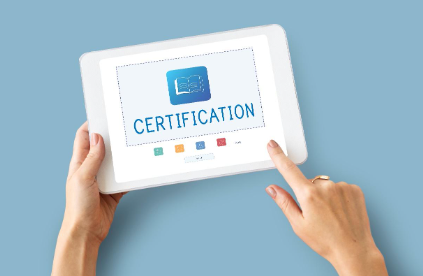Understanding ISO Certification
I. What is ISO Certification?
ISO certification signifies that an organization meets international standards set by the International Organization for Standardization (ISO). This certification demonstrates a commitment to quality, efficiency, and customer satisfaction across various sectors. Organizations can pursue different certifications, such as ISO 9001 for quality management or ISO 14001 for environmental management. Achieving ISO certification enhances credibility and allows businesses to operate globally, providing a structured framework for improving processes and products.
II. Benefits of ISO Certification
ISO certification offers numerous advantages, including enhanced credibility and improved operational efficiency. Organizations that achieve certification often experience increased customer satisfaction due to their commitment to quality. Additionally, ISO certification helps identify process inefficiencies, leading to significant cost savings. This recognition also attracts new clients and can result in better market positioning. Ultimately, investing in ISO certification can drive continuous improvement and establish a culture of quality within an organization.
III. Types of ISO Certifications
Various ISO certifications address specific organizational needs. ISO 9001 focuses on quality management systems, while ISO 14001 targets environmental management. Other notable certifications include ISO 45001 for occupational health and safety and ISO 27001 for information security management. Each standard outlines unique requirements and benefits. Organizations should carefully assess which certification aligns with their operational goals and industry standards to maximize the benefits of ISO certification.
IV. The Importance of ISO Certification in Today’s Market
In today’s competitive landscape, ISO certification has become increasingly vital. Customers and stakeholders often prefer working with certified organizations, viewing them as more reliable and trustworthy. This certification not only opens doors to new business opportunities but also demonstrates a commitment to quality and compliance. As regulations and consumer expectations evolve, certificação iso helps organizations stay ahead of the curve, enhancing their reputation and market positioning.
The ISO Certification Process
I. Preparing for ISO Certification
Preparation is critical for a successful ISO certification journey. Organizations must first evaluate their current processes and identify areas for improvement. Developing an action plan that includes employee engagement and training helps foster a culture of quality. Employees need to understand the importance of ISO certification and their roles in achieving it. A solid foundation sets organizations on the right path toward successfully obtaining ISO certification.
II. Documentation and Implementation
Comprehensive documentation is essential for ISO certification. Organizations need to create policies, procedures, and records that demonstrate compliance with ISO standards. Effective implementation of these documents across all departments ensures adherence to quality management principles. Regularly reviewing and updating documentation is crucial for maintaining compliance as the organization evolves. This proactive approach supports a strong commitment to ISO certification and continual improvement.
III. Conducting Internal Audits
Internal audits are vital in the ISO certification process. These audits evaluate the effectiveness of implemented processes and identify potential areas for improvement. Organizations should conduct regular audits to ensure compliance with ISO standards and facilitate continuous improvement. Training internal auditors enhances the auditing process and fosters a culture of accountability. By addressing non-conformities and implementing corrective actions, organizations strengthen their commitment to maintaining ISO certification.
IV. Leveraging Technology for ISO Certification
Incorporating technology can streamline the ISO certification process significantly. Utilizing software for document management, internal audits, and compliance tracking enhances efficiency and accuracy. Technology also facilitates real-time data collection and analysis, making it easier for organizations to monitor their processes. By adopting digital tools, organizations can reduce the administrative burden associated with ISO certification, allowing them to focus on quality improvement and maintaining standards.
Achieving and Maintaining ISO Certification
I. The Certification Audit
The certification audit is a crucial step in achieving ISO certification. A third-party auditor assesses the organization’s compliance with the relevant ISO standards through document reviews, interviews, and on-site inspections. Organizations must demonstrate adherence to established policies and procedures during this audit. Successfully passing the certification audit indicates that the organization meets ISO standards and is ready to receive certification, marking a significant achievement in their quality journey.
II. Continuous Improvement and Monitoring
Achieving ISO certification is only the beginning. Organizations must focus on continuous improvement and monitoring to maintain their certification. Regular reviews of processes, training programs, and management systems help ensure compliance with ISO standards. Monitoring performance through key performance indicators (KPIs) allows organizations to identify areas needing enhancement. A commitment to continuous improvement ensures organizations sustain their ISO certification and adapt to evolving market demands.
III. The Role of Management Commitment
Management commitment is vital for successful ISO certification and ongoing compliance. Leaders must actively support the certification process, allocate necessary resources, and engage employees in quality management initiatives. By demonstrating a strong commitment to ISO standards, management fosters a culture of quality throughout the organization. Effective communication and leadership encourage collaboration, ensuring that all employees understand their roles in maintaining ISO certification and achieving organizational goals.
IV. Strategies for Long-Term ISO Certification Success
To sustain ISO certification, organizations must implement long-term strategies that focus on quality culture and ongoing training. Establishing a framework for continuous learning and adaptation helps organizations remain compliant with evolving standards. Regularly engaging employees in quality initiatives and soliciting feedback fosters a culture of accountability. Additionally, maintaining strong communication channels ensures that everyone is aligned with organizational goals and understands their contributions to sustaining ISO certification.
Conclusion
ISO certification serves as a powerful catalyst for organizational growth and excellence. By understanding the certification process and committing to continuous improvement, businesses unlock the full potential of ISO certification. This investment enhances credibility, drives operational excellence, and opens doors to new opportunities. Embrace the journey toward ISO certification to guide your organization to success, quality, and increased customer satisfaction. Start today, and let ISO certification pave the way for a prosperous future in a competitive marketplace.



